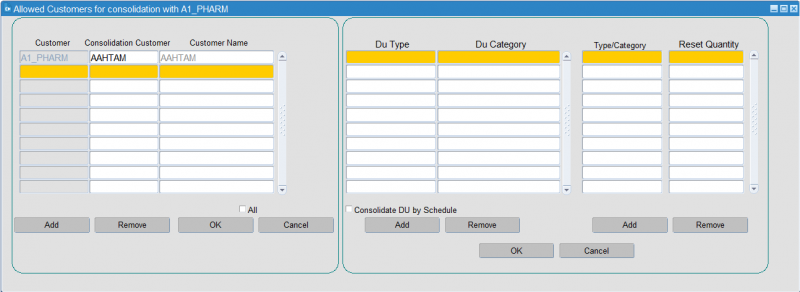Invoice Consolidation Maintenance
You can define consolidation customers through the Consolidation button provided in the Customers screen.
You can define the customers to whom the selected customer can consolidate, or choose all customers.
You can also define consolidation at the group level, to consolidate all customers within a group.
You can define the DU types and categories to be consolidate, and enter the reset quantity by DU Category.
The example below illustrates this feature.
Let the charges to transporting a given number of pallets from a location to another is as per given below:
| No of Pallets | Charge |
|---|---|
| 1 | 100 |
| 2 | 90.00 |
| 3 | 80.00 |
| 4 | 70.00 |
| 5 | 60.00 |
| 6 | 50.00 |
| 7 | 40.00 |
| 8 | 30.00 |
| 9 | 20.00 |
| 10 | 10.00 |
Assume that a customer, say KRAFT has 3 orders that need to be transported to Tesco Warrington in the same day. If the orders are to transport individually, then the charge for the each of the orders based on the number of pallets to be transported in given in the Charge column of the table below (charge derived from the table above). If the 'Consolidate Orders' flag is checked, then the orders will be consolidated and the customer charged for 9 pallets at 20.00.
| Order No | Pallets | Charge | Total |
|---|---|---|---|
| 1 | 4 | 70 | 280 |
| 2 | 3 | 80 | 240 |
| 3 | 2 | 90 | 180 |
| Total | 9 | - | 700 |
| Total by Consolidation | 9 | 20 | 180 |
